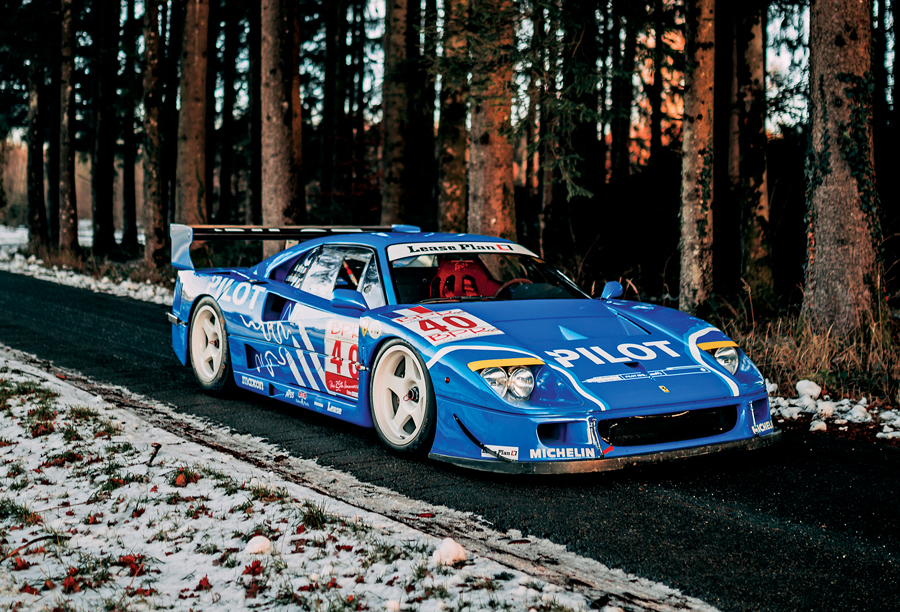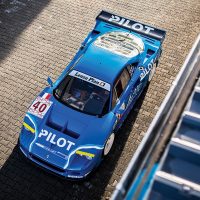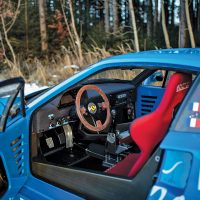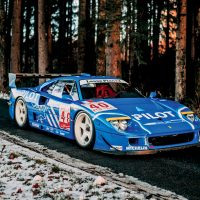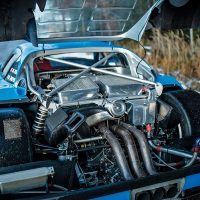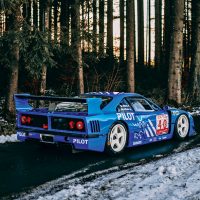SCM Analysis
Detailing
| Vehicle: | 1987 Ferrari F40 LM |
| Years Produced: | 1990–95 |
| Number Produced: | 32 (LM, GT, GTE) |
| Original List Price: | N/A |
| SCM Valuation: | $5,517,444 (this car) |
| Chassis Number Location: | Right front frame near suspension |
| Engine Number Location: | Between cylinder heads in back |
| Club Info: | Ferrari Owners Club |
| Website: | http://www.ferrariownersclub.org |
| Alternatives: | 1993–98 McLaren F1, 1993–98 Porsche 911 GT2, 1992–93 Porsche 959 |
| Investment Grade: | A |
This car, Lot 126, sold for $5,517,545, including buyer’s premium, at RM Sotheby’s Rétromobile sale in Paris, FRA, on February 8, 2019.
Interestingly, all Ferrari F40s were red when they left the factory, and the fact that this one proudly and honestly wears French racing blue suggests there is quite a lot that is special about this car.
The fact that it sold for three to five times what a garden-variety F40 would expect to bring adds an exclamation point to the obvious — this is not your father’s Ferrari.
Enzo’s last car
Ferrari had long stopped building purpose-built racing cars other than Formula One. However, in honor of the company’s 40th anniversary — and as Enzo’s personal last hurrah — the car was conceived as a return to Ferrari’s hairy-chested, brutalist beginnings.
By the late 1980s, sophisticated design, attention to drivers’ needs, and technological wizardry were well established in the newly defined “supercar” category.
Lamborghini’s Countach and Porsche’s 959 competed with Ferrari’s Testarossa to provide awesome performance combined with a pampered driver experience. With the very limited-production F40 (the original production goal was 400 cars), Ferrari chose to go in exactly the opposite direction.
The windscreen and windows were polycarbonate plastic. It did have a heater and some air conditioning — but no carpets, sound system, door panels, leather trim or even door handles.
Becoming a real racer
The F40 was fast — lord, were they fast. A mid-engine, rear-drive platform with a twin turbocharged 3-liter engine cranking out 470 hp pushed 2,800 pounds of aerodynamic slipperiness close to 200 mph.
The F40 also pushed any driver’s abilities. Given what the car was, it is not surprising that some of the customers wanted to race them.
The problem was that at the time there was no place in Europe to do that. IMSA in the United States was the only viable option, so the French Ferrari distributor chose to go that route.
The factory had long since stopped dealing with anything but Formula One, but the Padua dealer Michelotto had taken over as the quasi-official Ferrari GT racing department, so they were charged with converting several F40s to full racing trim.
And the F40 LM was born.
Lighter and faster
Introduced in 1989 for IMSA racing, the LM variant lost 500 pounds and gained 250 horsepower (to 720) through bigger turbochargers, better intercoolers, and engine modifications.
The F40 LM also got bigger brakes, chassis stiffening, lots more tire, and track-only ride height to become a very serious racing car. The LM was only modestly successful in IMSA, but as the 1990s got rolling, several new championships started up in Europe — particularly the BPR Global GT series and the Italian Supercar series — and Michelotto happily took new F40 chassis from the factory to build racers to meet those rules. Those Michelotto cars were called the F40 GT.
By 1995 the BPR series was going well, and the rules relaxed a bit, so a series of Grand Touring Evoluzione (GTE) variants were built.
They got even more horsepower, carbon brakes and a pure racing sequential transaxle to be the ultimate F40 racers. Some were scratch built, and some were earlier cars upgraded to the new rules.
Placing 12th at Le Mans
Our subject car (#74045) was the 13th of 19 F40 LMs built, delivered in May 1992 to a Swiss racer for European racing. It didn’t really get raced until 1995, when it participated in the BPR races.
In those years, Le Mans was struggling to fill their entry grids, so they allowed BPR cars, and this car ran there in 1995, finishing 12th overall and 6th in class.
Before the 1996 season, the car went back to Michelotto and was converted to full GTE specification, which is how it remains to the present.
Why so much money?
So what makes this car worth so much more than a street F40?
Exclusivity, bragging rights, and sheer adrenaline rushes come to mind. Although the F40 was originally conceived as a very limited production, demand was such (lots of speculators) that Ferrari eventually produced just over 1,300 of them.
There were just 32 of the LM, GT, and GTE competition cars.
These racing F40s are also very distinct from the road cars. There is no mistaking one for the other, and very few of them are legitimately not red.
Out of this world on the track
This is a car you would never drive on the street, but if you are good enough — and brave enough — to put it on the track and drop the hammer, I am told the experience transcends easy description.
With the turbos, the power delivery jumps from maybe 400 to over 700 almost instantly, and you had better be aimed where you want to go — because that is where you are going to end up.
There are few experiences like it anywhere.
There is an old saw about wanting the car you dreamed of when you were young, and those dreamers are in their early 50s now. They are still young enough to want — and believe they can — ride and tame this prancing stallion. If you’ve got the money, enthusiasm, and skill to drive it, this was an entirely rational — and wildly exciting — purchase. Fairly bought. ♦
(Introductory description courtesy of RM Sotheby’s.)
